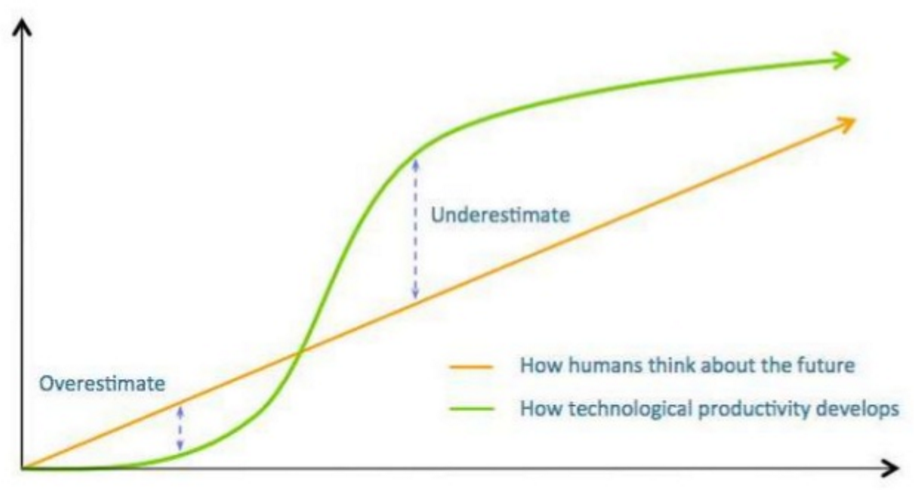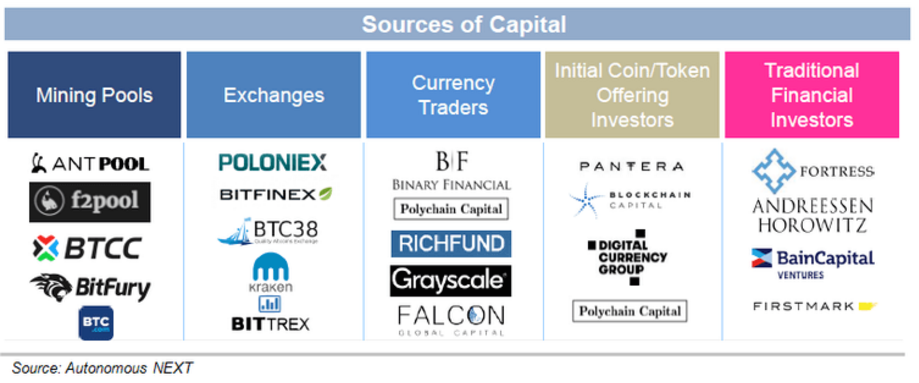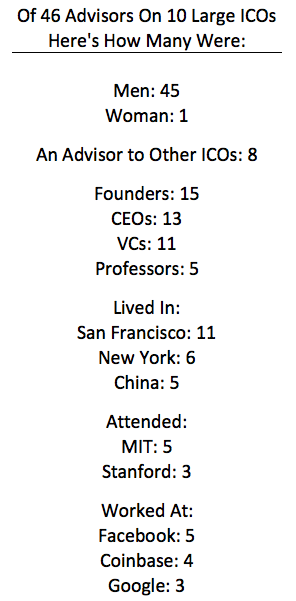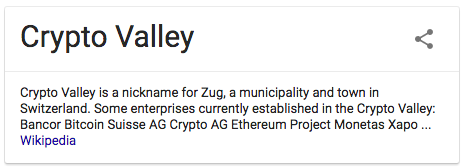It was an epic week in cryptoland, highlighted by the rapid rise in the value of Bitcoin Cash and the innovative and successful ICO of Ox, a decentralized crypto exchange. The total market cap of cryptocurrency tracked by CoinMarketCap stands at $145B, up $5B for the week (thanks Bitcoin Cash). All great stuff, but noise in the long run.
What’s important to the long run success of cryptocurrency is that infrastructure is being built to enable scaling, continued innovation, a clear regulatory framework, and institutional adoption. With that in mind, here are. 6 cryptocurrency thoughts to ponder on your way down the rabbit hole:
1. Valuing Cryptocurrency Remains The $145 Billion Question
For the most part, the best writing analyzing ICOs focuses on the technical aspects, like this piece on the blog of crypto expert and Cornell Prof Emin Gün Sirer. The piece was written by a Professor, a post doc, a Phd student, and three others associated with Cornell.
The art of valuing cryptocurrency is still in it’s infancy. As I’ve written, the best piece I’ve seen on how to value the “utility” of cryptocurrencies is cburniske’s The Crypto J-Curve.
The most thoughtful work I’ve seen in terms of valuing Bitcoin as a store of value/in comparison to gold is by Thomas Lee of Fundstrat. His views are outlined in this piece recent piece in Barron’s. Last Friday, Lee predicted Bitcoin will hit $,6000 by mid ’18.
Another way to value cryptocurrencies is to compare them to relevant publicly traded entities. This is known as Comparable Company Analysis in traditional equity analysis. For example, here’s one way to value NEO, which is the 9th most valuable coin at a $1.95B market cap. NEO is up 27,000% to date in 2017 ($10,000 is now $2.7 million). NEO is widely considered to be the “Ethereum of China”, enabling smart contracts and poised to be the go-to platform for what for the expected onslaught of Chinese ICOs. So what should the Chinese Ethereum be worth in relation to Ethereum? Using comparable analysis I started by looking at what the Chinese Google (Baidu) trades at in relation to Google:
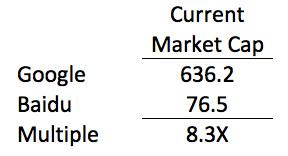
I then used that multiple to see where NEO would trade at if it traded at the same multiple to Ethereum as Baidu trades at to Google:
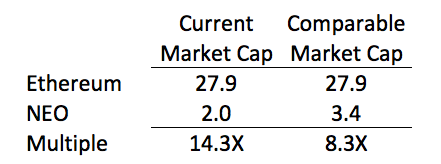
This analysis indicates that NEO has 70% upside levels if it trades at the same comparable market cap multiple to Ethereum as Baidu trades at in comparison to Google. This simplistic analysis has multiple potential flaws (e.g. is Ethereum fairly valued, is Baidu a good comp to Google, is NEO a good comp to Ethereum). However, the point I’m making, and will continue to make, is that real institutional adoption of cryptocurrency requires the industry to develop generally accepted ways to value cryptocurrency. That’s what I’ll continue to research and write about.
2. Are We In a Cryptocurrency Bubble? Amara’s Law & Carota Perez Provide Historical Context
Roy Amara was the President of the Palo Alto based think tank Institute For The Future when he coined Amara’s law: “We tend to overestimate the effect of a technology in the short run and underestimate the effect in the long run”. That’s because humans think in a linear fashion, while technology develops in an “S Curve”:
Cryptocurrency is in the early days of the S Curve, where people overestimate how quickly new technologies will get adopted. That’s when bubbles occur. This has also been called as the “hype cycle”.
Lots of great books have been written on bubbles including Carota Perez’s “Technological Revolutions and Financial Capital: The Dynamics of Bubbles and Golden Ages”. Read this Foreign Affairs review to see the future of cryptocurrency (and all great technological innovation).
So unless “this time it’s different”, which it NEVER is, then we’re in a bubble. But in 10 years this will all be noise, and people in it for the long run, will reap the rewards of being early.
3 . Native Protocol Funds Are The Newest Addition To The Cryptocurrency Funding Stack
Given the massive disruptive potential of cryptocurrency and decentralized networks, the funding stack is increasingly robust:
We can add another source to the chart above, Protocol Funds. My favorite reads this past week was Yannick Roux’s “The Rise of Native Protocol Funds”, which highlighted the emergence of these funds and the role they’ll play in the ecosystem.
In their August update, Tezos announced “… a commitment of $50 million in VC funding to companies looking to build on the Tezos platform. This capital will be partially deployed through VC partners to be announced, as well as through a direct venture arm.” In other words, some money raised in the Tezos ICO will be used to fund companies building tech to enhance or leverage the Tezos platform.
In the video below, Blockstack announces the $25 million Blockstack Signature Fund, outlining it’s plans to work with traditional VCs to fund developers building decentralized apps on top of Blockstack.
Access to capital is always a critical factor in the success of companies. In the world of native protocols, access to capital for developers working with a given protocol, will also be critical to the success of protocols. Hence the reason for these protocol funds, with more protocol funds sure to follow.
4. ICO Advisors Are Diverse, Other Than….
Most companies that have ICO’d have small employee bases that are supplemented by Advisors providing valuable technical or business insight. As ICOs are increasingly been driven by PR, having well known Advisors “..is becoming a must have”. So I analyzed the composition of Advisors at 10 successful ICOs, and found there was tremendous diversity across the advisor base, other than gender. Now, my sampling wasn’t scientific, but one female out 46 Advisors highlights the industry has a gender issue to address. Here’s how the 46 Advisors broke out:
Advisors were geographically decentralized. In addition to the U.S. and China, countries represented also included Canada, The United Kingdom, The Netherlands, Russia, Israel, Spain, and Germany.
Finally, what was most notable, was few of the Advisors appeared to be window dressing for PR purposes. Almost all advisors had deep industry and/or technical expertise.
5. The State Of NY Is Losing To Zug In Crypto Leadership
For a cryptocurrency enthusiast living in New York, few things are as lame as going to a crypto related website (e.g. Shapeshift, Kracken, Poloniex..) and reading “… can be used everywhere except in New York and North Korea.” WTF. The Google result for CryptoValley yields:
I’ve heard great things about a recent three day field trip to Zug thrown by the crypto community there. Singapore is also a major hub, and Gibraltar appears to be gaining as a destination. But NY should be Crypto Valley.
Now the U.S. as a whole, with it’s uncertain regulator environment, is causing some ICOs to prevent participation from U.S. investors. However, the regulators in New York are doing even more damage to the industry in the state. On August 8, 2015, New York started requiring a BitLicense to engage in cryptocurrency activities. Only three companies have been granted a license (Coinbase, Ripple and Circle) even though more than 20 have applied. The majority of crypto companies/ICOs, are just steering clear of NY, avoiding the estimated $100,000 in licensing costs and avoiding the “reckless and ethically impermissible” intrusion of privacy the law demands.
If things don’t start improving in NY, I look forward to Zug in ’18.
6.Tweet Storm of The Week
Read the 50+ tweet storm by Sizhao Yang. It does a great job of putting this crypto moment in to context on many levels (including comparing NEO to Ethereum)



